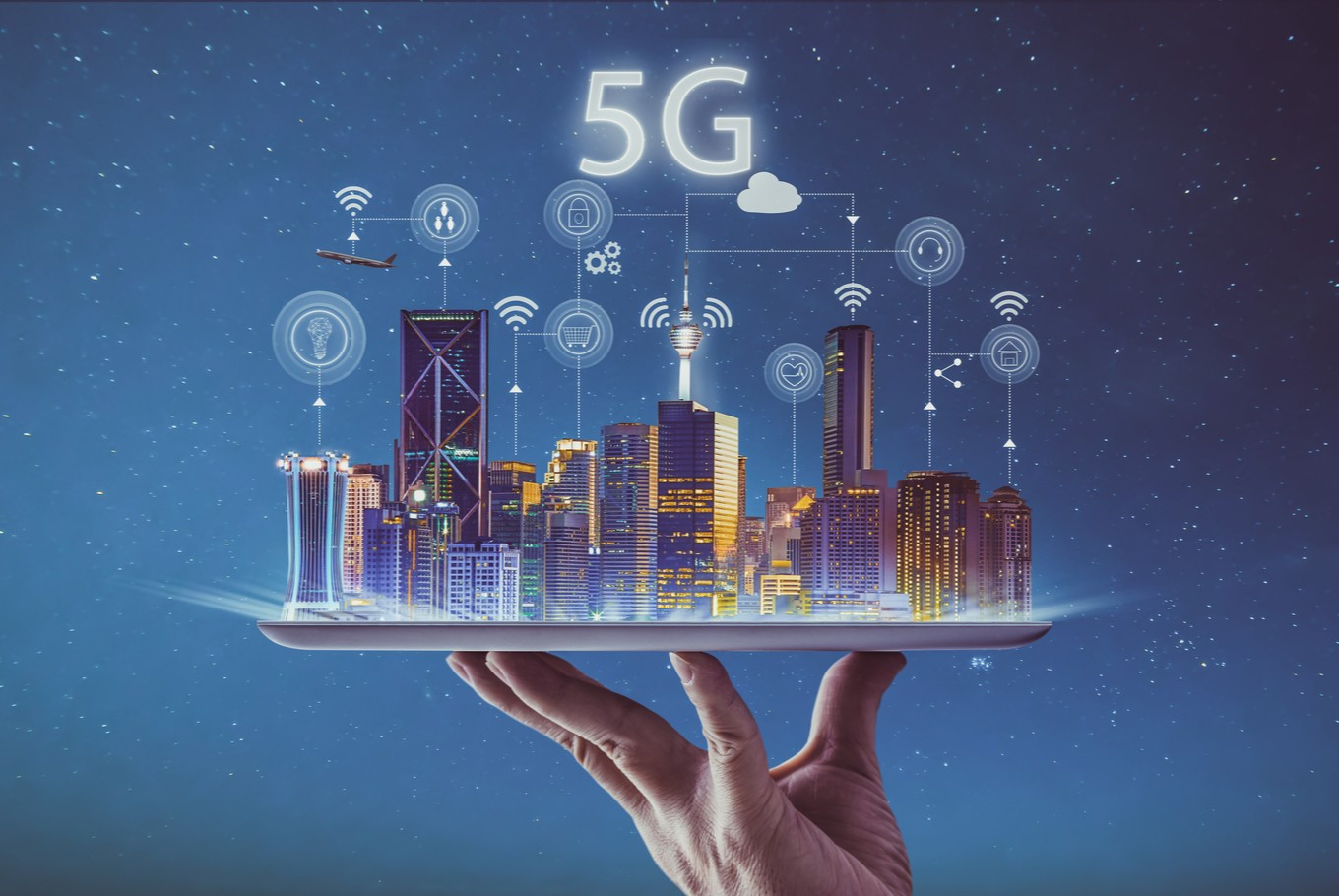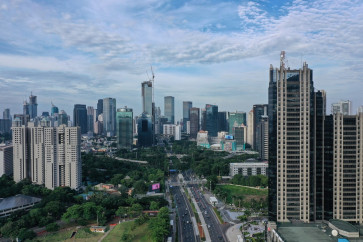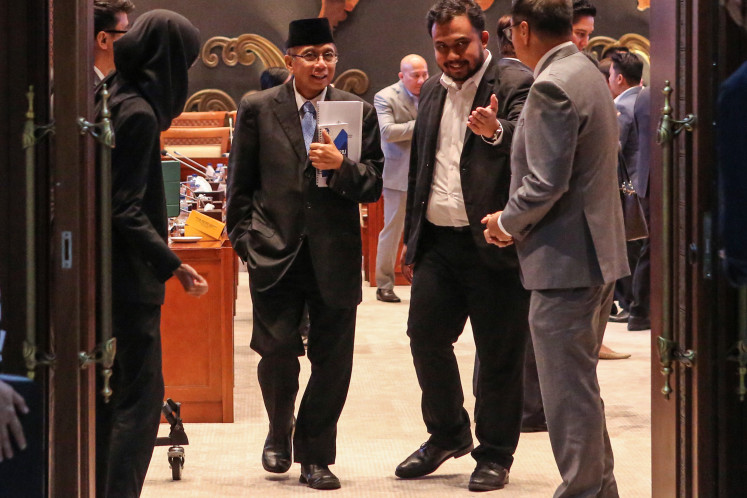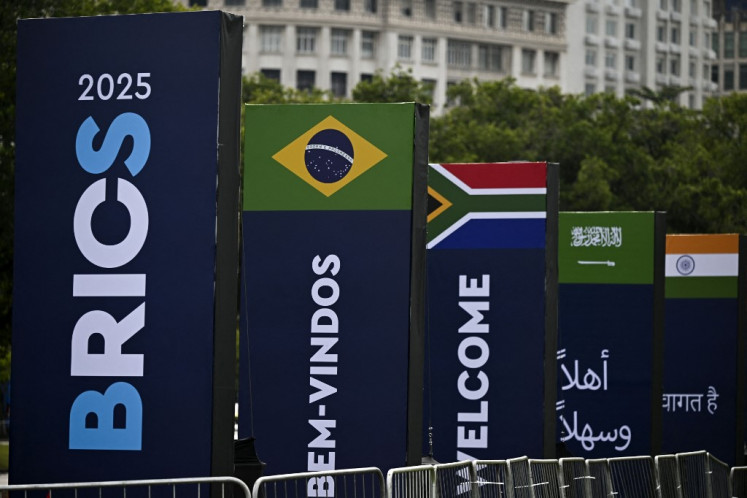Popular Reads
Top Results
Can't find what you're looking for?
View all search resultsPopular Reads
Top Results
Can't find what you're looking for?
View all search resultsEvolved 5G core to bring Indonesia to new digital age
5G has demanding service and network requirements that require a fundamental change to the core architecture.
Change text size
Gift Premium Articles
to Anyone
N
eedless to say, 5G has the power to facilitate the acceleration of digitalization in society. With it expected to have a peak download speed of 20 gigabits per second and extremely low latency speeds of 1-4 milliseconds, the deployment of 5G has the potential to greatly enhance existing mobile and fixed communications services, as well as enable a new range of solutions for an increasingly digitalized industrial ecosystem.
This new form of connectivity will create a profound impact on business processes as well as operator and consumer experiences. Indonesia – as the largest economy in ASEAN – is expected to capture the region’s biggest portion of rising consumer and enterprise revenues arising from 5G deployment.
However, to scale 5G to go beyond simple connectivity to supporting the nation’s broader socioeconomic development, there needs to be an evolution in the core network, which will allow for more efficient, automated management of increasingly complex networks.
In fact, 5G transformation is much more than just a new form of radio access technology. It provides new opportunities (and new challenges) for cloud service providers (CSPs) – and by extension, businesses and consumers that engage their services – when embarking on their digital transformation process.
However, 5G has demanding service and network requirements that require a fundamental change to the core architecture. This is because the 5G core will be the heart of the network and will act as an anchor point for multi-access technologies; it needs to deliver a seamless service experience across both fixed and wireless access technologies.
To make this happen, the 3rd Generation Partnership Project (3GPP) – which develops technical specifications and protocols for mobile telecommunications – defined a new 5G core architecture that can support service delivery over wireless, fixed or converged networks.
What is transformative about this new core is its use of a cloud-aligned Service-Based Architecture (SBA) that supports control plane function interaction, reusability, flexible connections and service discovery that spans all functions.
It is through migration to the SBA that cloud-native products and solutions can be developed, which in turn will facilitate the rapid, cost-effective deployment of diverse services across a range of access technologies.
With a population of over 270 million, Indonesia is an Asian economic giant, one whose economy grew tremendously since the 1997/98 financial crisis and saw the concurrent improvement of living standards. Growth has slowed in recent years, but Indonesia is embracing the digital economy to raise its competitiveness. However, the country can stand to benefit from greater nationwide internet penetration to stimulate holistic development in this area.
It is not for want of trying; Indonesia is geographically unique in that it has an area of over 1.9 million square kilometers spread across an archipelago that includes 600 inhabited islands. From Aceh in Indonesia’s westernmost point to Papua in the Far East (closer to Darwin, Australia, than it is to Jakarta), establishing connectivity is a monumental task.
Yet, Indonesia is unperturbed by the challenge as the government completed the Palapa Ring project in late 2019 – a keystone infrastructure designed to provide greater fiber optic network coverage to at least 440 regencies and cities nationwide, with the intent to make 4G coverage more widespread.
The Palapa Ring project underscores Indonesia’s priority of connecting its people and digitizing its industries, although the government understands that 5G rollout will take time due to the infrastructural challenges and spectrum availability required for 5G rollout
While Indonesia is now taking a measured approach to 5G, we can still look at the key areas in which this new era of connectivity can benefit the nation, namely the automotive manufacturing industry which is one of the biggest of its kind in Southeast Asia. To raise the sector’s competitiveness, it needs to be more productive.
As we head into Industry 4.0, Indonesia’s production lines can benefit from automation in the form of autonomous robots, big data and internet of things (IoT) devices.
The enablement of seamless operations requires complexity and time-sensitivity that only the cloud native 5G core can achieve, as it allows more data to be gathered to create “digital twins” (virtual replicas of physical devices) to optimize manufacturing chain processes.
Last year, we put 5G to the factory floor test during a field trial in Japan. It was aimed at addressing the heightened demand for wireless communications at manufacturing sites, which now need stable connectivity between IoT devices to improve productivity. Doing so required us to leverage 5G connectivity to prove the feasibility of layout-free production line with Autonomous Mobile Robots (AMRs) as well as real-time coaching using IoT and artificial intelligence.
Beyond smart factories, 5G has the potential to transform other prime sectors in Indonesia such as agriculture (such as using 5G connected drones across plantations) and mining (by introducing greater automation for operations in high-risk areas).
However, wider commercial roll-out – when it eventually happens – will be limited as legacy core networks are currently configured and maintained by traditional approaches developed for proprietary hardware and software. This means their operations require a variety of manual control methods. They cannot support the business and complexity of a 5G network, nor the performance and capacity required to digitally transform more of Indonesia’s key sectors.
In contrast, a cloud-native 5G core network offers greater flexibility, responsiveness and adaptability – all of which are needed to deliver the high performance, ultra-reliability and low latency demanded by the 5G programmable world and cement Indonesia’s economic position in Asia.
***
The writer is head of Nokia Software Indonesia. The views expressed are her own.










